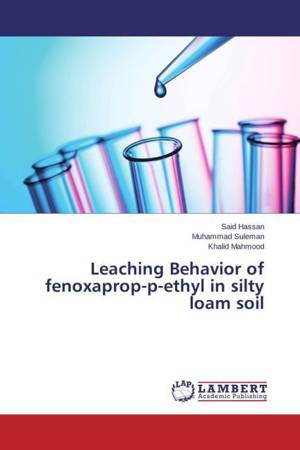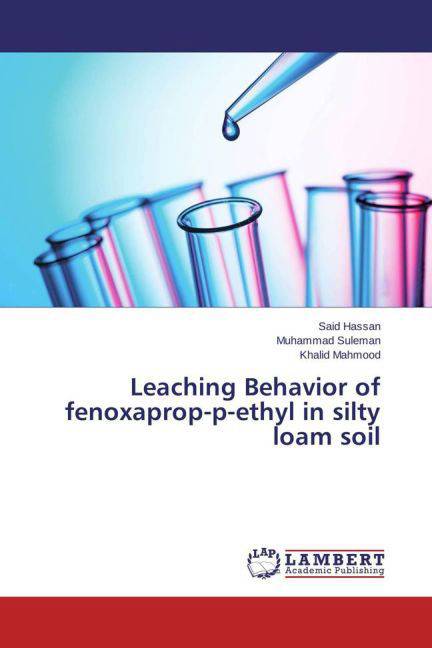
- Afhalen na 1 uur in een winkel met voorraad
- Gratis thuislevering in België vanaf € 30
- Ruim aanbod met 7 miljoen producten
- Afhalen na 1 uur in een winkel met voorraad
- Gratis thuislevering in België vanaf € 30
- Ruim aanbod met 7 miljoen producten
Zoeken
Leaching Behavior of fenoxaprop-p-ethyl in silty loam soil
Hassan Said, Suleman Muhammad, Mahmood Khalid
Paperback | Engels
€ 35,45
+ 70 punten
Omschrijving
Herbicides and its transformation products have been reported in ground water and the non toxic organism and environment can be affected. For this purpose the leaching potency of fenoxaprop-p-ethyl and atrazine (tracer) in silty loamy soil was conducted in columns under disturbed soil laboratory condition with average rain fall of 90 mm per week (assuming worst case scenario) to every of soil column. Fenoxaprop-p-ethyl was applied at two different applications rate to the soil cores. Similarly atrazine was also applied at the recommended rate. The leachates were collected on weekly basis from every soil cores. Solid phase extraction (SPE) was used to extract the pesticides from leachates. The extract was then run both quantitatively and qualitatively on reversed phase high performance liquid chromatography (HPLC). From the analysis atrazine was found to be more mobile and their detections were started from the very first week, while that of fenoxaprop-p-ethyl was not detected in the first three weeks. However its detection started from week four to week twelve. Both atrazine and fenoxaprop-p-ethyl even at recommended rate can contaminate the surface and ground water and pose risk
Specificaties
Betrokkenen
- Auteur(s):
- Uitgeverij:
Inhoud
- Aantal bladzijden:
- 52
- Taal:
- Engels
Eigenschappen
- Productcode (EAN):
- 9783659749667
- Verschijningsdatum:
- 25/08/2015
- Uitvoering:
- Paperback
- Formaat:
- Trade paperback (VS)
- Afmetingen:
- 152 mm x 229 mm
- Gewicht:
- 90 g

Alleen bij Standaard Boekhandel
+ 70 punten op je klantenkaart van Standaard Boekhandel
Beoordelingen
We publiceren alleen reviews die voldoen aan de voorwaarden voor reviews. Bekijk onze voorwaarden voor reviews.











